spanish
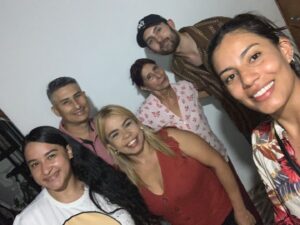
 My grandniece, Manuela Ortiz, has had a very exciting year. She and my grandnephew, James Renville are buying a house. The house belongs to his mom, Toni Chase currently, and it is the house where James spent much of his childhood, so it is really a cool thing for his to be buying this particular house. There are some renovations, repairs, and updates that they want to do, so they are working on those, and they aren’t in a big hurry to move in. They want it to be perfect for their move. It is a nice house, and we are all excited for
My grandniece, Manuela Ortiz, has had a very exciting year. She and my grandnephew, James Renville are buying a house. The house belongs to his mom, Toni Chase currently, and it is the house where James spent much of his childhood, so it is really a cool thing for his to be buying this particular house. There are some renovations, repairs, and updates that they want to do, so they are working on those, and they aren’t in a big hurry to move in. They want it to be perfect for their move. It is a nice house, and we are all excited for  them. James and Manuela met in 2019 and married in July of 2021. They have been living in an apartment, and now they are ready to have their own home.
them. James and Manuela met in 2019 and married in July of 2021. They have been living in an apartment, and now they are ready to have their own home.
Manuela has been working for the Wyoming Housing Network as a housing counselor. They have been so happy with her that she was recently given a promotion to the title of House Education Manager. We are so proud of her. Manuela immigrated to the United States from Colombia and had originally wanted to work in the United States to learn English. Her plan was to use English, as a way to be a more valuable asset to her employer back in Colombia, but God had other plans for her. Her Spanish and her mastery of English landed her the job she now has because she is able to be not only be a help in the housing market, but to cross a language barrier for people who really need that assistance. Of course, God also had the plan of a match made in Heaven for her and James…a match we are all very happy about.
This last summer, Manuela took James to Colombia to meet the new extended part of his family. It was his first 
 visit to Colombia, and his first time to meet any of her family, except for on Skype. As it turns out, James and Manuela’s mother, Consuelo share the same birthday. That made a June trip to Colombia perfect, because they held a birthday party for both of them while they were there. The trip was so much fun for Manuela and James. James loves to travel, and Manuela had a great time showing him all the sights in her homeland. I’m sure there will be many return trips in their future, and before we know it, James will be as fluent in Spanish as Manuela is in English. I’m so glad they got to make the trip. Today is Manuela’s birthday. Happy birthday Manuela!! Have a great day!! We love you!!
visit to Colombia, and his first time to meet any of her family, except for on Skype. As it turns out, James and Manuela’s mother, Consuelo share the same birthday. That made a June trip to Colombia perfect, because they held a birthday party for both of them while they were there. The trip was so much fun for Manuela and James. James loves to travel, and Manuela had a great time showing him all the sights in her homeland. I’m sure there will be many return trips in their future, and before we know it, James will be as fluent in Spanish as Manuela is in English. I’m so glad they got to make the trip. Today is Manuela’s birthday. Happy birthday Manuela!! Have a great day!! We love you!!
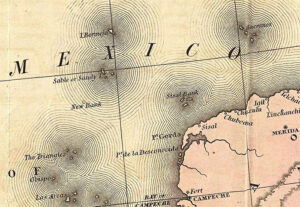
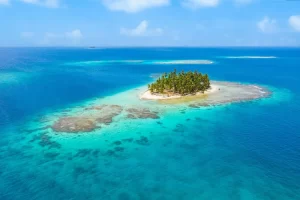 For centuries there the maps of Mexico showed an island called Bermeja located off the north coast of the Yucatán Peninsula. It wasn’t a big island, but it was there. Then, suddenly, it wasn’t there. Now…islands don’t just disappear, so was it there, or wasn’t it, and if it was, where did it go? These days, it’s known as a phantom island. What’s interesting about this island is that a search for it found nothing that could have been called an island. While it is strange that an island was on a map and then wasn’t, I began to wonder why it mattered. There was a reason…oil rights. When a question arose concerning oil rights in the Gulf of Mexico, where the island was concerned, research started when someone pointed out that the island has no real boundaries, and therefore, no rights to oil in the Gulf of Mexico. So, authorities started looking for this piece of land, but they found only water. I’m sure that settled the question of oil rights, but it doesn’t explain whether or not the island ever existed, or if it was just an error on the old maps.
For centuries there the maps of Mexico showed an island called Bermeja located off the north coast of the Yucatán Peninsula. It wasn’t a big island, but it was there. Then, suddenly, it wasn’t there. Now…islands don’t just disappear, so was it there, or wasn’t it, and if it was, where did it go? These days, it’s known as a phantom island. What’s interesting about this island is that a search for it found nothing that could have been called an island. While it is strange that an island was on a map and then wasn’t, I began to wonder why it mattered. There was a reason…oil rights. When a question arose concerning oil rights in the Gulf of Mexico, where the island was concerned, research started when someone pointed out that the island has no real boundaries, and therefore, no rights to oil in the Gulf of Mexico. So, authorities started looking for this piece of land, but they found only water. I’m sure that settled the question of oil rights, but it doesn’t explain whether or not the island ever existed, or if it was just an error on the old maps.
Of course, no pictures of the island are known to exist. All we know is that one century, it’s sitting pretty at 22°33′ N, 91°22 E in the Gulf of Mexico and the next, it’s vanished, confounding maritime investigations and aerial surveys alike. While it may seem to many people as no big deal, the Mexican people want to know where it went. It wasn’t inhabited, so you might wonder why it is so important to know if it did and if so, where it went. The thing is that while it wouldn’t be like the island of Jamaica went missing, it still changes what the Mexican people thought they knew about their world. For some people, that is akin to having your computer have a virus, and you can’t seem to get rid of it. Ok, maybe that is extreme, but in a techy world, that would be a good comparison.
Bermeja was a common fixture on maps drawn by Spanish explorers back in the 16th and 17th centuries. Strangely, its location sometimes varied slightly and sometimes its name appeared as Vermeja, but its existence was not in question at that time. In the 18th century, however, the island’s cartographic presence started faltering, before it eventually dropped off the horizon altogether. Its last mapped appearance dates back to the 1921 edition of the Geographic Atlas of the Mexican Republic. So, what happened to it? If you ask me it eroded away, but that is just my opinion. There are many theories regarding Bermeja’s mysterious fate. Some say that “global warming” caused the island to succumb to rising sea levels. Some wonder if an underwater earthquake caused it to denigrate. Then, there is the conspiracy theory that maybe, the CIA blow it up. They theorize that with a view to expanding US sovereignty in the oil-rich Gulf the island had to go. Others say that while that might be far-fetched, perhaps it’s not entirely impossible. I suppose that given its small size it might not have taken much to blow it up.
The Mexican and United States governments negotiated a treaty to divide Hoyos de Dona in 1997. Hoyos de Dona is a stretch of international waters taking in the area where Bermeja was once believed to be located. Now, the island mattered, so the Mexican government sent an expedition out to find it. The reason…if Bermeja did exist, it would significantly extend Mexico’s maritime limits and, more importantly, its right to the oil deposits within these limits. They found nothing, and the treaty was signed. Still, there was the authorized period of delay on oil exploration and exploitation in Hoyos de Dona, giving them a little time. That period of delay is to expire in 2010, Mexico started the hunt again. The implications for the country’s economy were just too appealing to ignore.
The “hunt” consisted of three official investigations that took place in 2009. All three used the most best technologies available at that time. They left “no wave unturned and no depth unplunged.” Nevertheless, Bermeja, nor any sign that it existed, could be found. There are those who think that it’s simply time to admit that the island never existed, and maybe it was invented by early explorers to mislead their rivals. Julio Zamora, president of the Mexican Society of Geography believes so, and says, “Countries making maps in the 16th and 17th centuries published them with inaccuracies to prevent their enemies from using them.” If ships saw an island on the map, they would avoid the area, thus allowing the map-makers free run of the area. I’m not sure why that would be important, but I suppose it’s possible, but Irasema Alcántara, from the Geography Institute at the Universidad Nacional Autónoma de México (UNAM), disagrees, saying “We’ve encountered 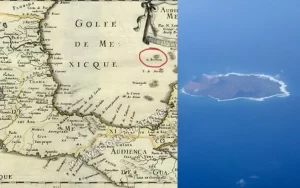
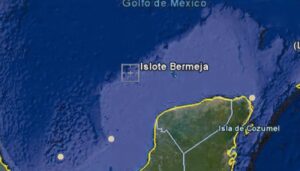 documents containing very precise descriptions of Bermeja’s existence. On this basis we firmly believe that the island did exist, but in another location.” Well, now, that puts a whole new spin on an otherwise totally confusing situation. Maybe, we should just leave well enough alone and say, “Now you see it, now you don’t.” Highly unlikely.
documents containing very precise descriptions of Bermeja’s existence. On this basis we firmly believe that the island did exist, but in another location.” Well, now, that puts a whole new spin on an otherwise totally confusing situation. Maybe, we should just leave well enough alone and say, “Now you see it, now you don’t.” Highly unlikely.

 After working for the City of Casper since high school, my grandnephew, James Renville decided that it was time for a change. So, he went to work for Red-D-Arc Welderentals. I didn’t know what kind of a company this was, but suspected that it had to do with welding. So, I looked it up and found out that Red-D-Arc Welderentals is an Airgas company that rents and leases welders, welding positioners, welding-related equipment, and electric power generators…anywhere in the world. This past May marked Jamrs’ first full year on the job. James loves what he does and is very good at it. His job is to go out and talk with people and make sales. Not everyone is cut out to be a sales representative, so the fact that James is so good at it speaks volumes. I don’t think it’s a job I would be very good at. Nevertheless, for James it was a definite step up.
After working for the City of Casper since high school, my grandnephew, James Renville decided that it was time for a change. So, he went to work for Red-D-Arc Welderentals. I didn’t know what kind of a company this was, but suspected that it had to do with welding. So, I looked it up and found out that Red-D-Arc Welderentals is an Airgas company that rents and leases welders, welding positioners, welding-related equipment, and electric power generators…anywhere in the world. This past May marked Jamrs’ first full year on the job. James loves what he does and is very good at it. His job is to go out and talk with people and make sales. Not everyone is cut out to be a sales representative, so the fact that James is so good at it speaks volumes. I don’t think it’s a job I would be very good at. Nevertheless, for James it was a definite step up.
This past year has found James having the time of his life in his new life. He and Manuela have been working on 
 setting up their new place, They celebrated their first year of marriage, and will soon celebrate their second year. His beauty (Manuela) introduced him to his first Latin concert (Yankee Daddy) in Denver, and James introduced Manuela to her first US Soccer match between James’ all-time favorite team Chelsea FC (England) vs Club America (Mexico) in Las Vegas. They both got to experienced their first college football game at University of Wyoming with Jemez bonus dad, Dave Chase (James’ mom, Toni Chase tells me she was so glad to miss that game). James and Manuela also took several little weekend trips around Wyoming, Colorado, and Montana.
setting up their new place, They celebrated their first year of marriage, and will soon celebrate their second year. His beauty (Manuela) introduced him to his first Latin concert (Yankee Daddy) in Denver, and James introduced Manuela to her first US Soccer match between James’ all-time favorite team Chelsea FC (England) vs Club America (Mexico) in Las Vegas. They both got to experienced their first college football game at University of Wyoming with Jemez bonus dad, Dave Chase (James’ mom, Toni Chase tells me she was so glad to miss that game). James and Manuela also took several little weekend trips around Wyoming, Colorado, and Montana.
While all that has made for a great year, the big trip is coming up in a few days when they travel to Colombia where James will meet his new family and get to celebrate not only his birthday, but his new mother-in-law, Consuelo Ortiz Montoya’s birthday (which happens to be on the same day as his) and his new sister-in-law, Sara Marin’s birthday which is June 14 (just 1 day before). They are going to have a blast! It will be a great beginning to his next year. There is nothing be little “concern” however. While James is very excited to meet his new family, he really wants to 
 be able to speak in some way with Manuela’s parents. James doesn’t speak Spanish and her parents don’t speak English, so that will be interesting. James could speak through Manuela, but it isn’t how he wants this to go.
be able to speak in some way with Manuela’s parents. James doesn’t speak Spanish and her parents don’t speak English, so that will be interesting. James could speak through Manuela, but it isn’t how he wants this to go.
When James isn’t working or spending time with his bride,he still finds time to rollerblade and play pool with his dad, Jim Renville. Also, he and Manuela still make time to hang out with his mom and bonus dad at least once a week. He was also been dog-sitter for his dad’s and mom’s dogs, taking care of his little “fur” siblings. Today is James’ birthday. Happy birthday James!! Have a great day!! We love you!!

 My grandniece, Manuela Ortiz joined our family on July 18, 2021, when she married my grandnephew, James Renville. Manuela is such a happy person, and she brings so much sunshine into the lives of our family. She is an excellent dancer, and James is learning to dance too. They have even done some videos of them dancing and placed them online. Not everyone has the coordination to do things like Salsa dancing, but Manuela certainly does…and I’ll have to leave that to her. It’s best that way.
My grandniece, Manuela Ortiz joined our family on July 18, 2021, when she married my grandnephew, James Renville. Manuela is such a happy person, and she brings so much sunshine into the lives of our family. She is an excellent dancer, and James is learning to dance too. They have even done some videos of them dancing and placed them online. Not everyone has the coordination to do things like Salsa dancing, but Manuela certainly does…and I’ll have to leave that to her. It’s best that way.
Speaking fluent Spanish makes Manuela as asset to Wyoming  Housing Network, where she is a housing counselor. When Manuela first came to America from Columbia, it was with the intent to study English, so that when she went back home, she could move up in her company. Things changed as time went by, and before long, she knew that she wanted to immigrate to America permanently. That was in the works, when she met her future husband, my grandnephew, James Renville. They met in 2019 and have been inseparable ever since.
Housing Network, where she is a housing counselor. When Manuela first came to America from Columbia, it was with the intent to study English, so that when she went back home, she could move up in her company. Things changed as time went by, and before long, she knew that she wanted to immigrate to America permanently. That was in the works, when she met her future husband, my grandnephew, James Renville. They met in 2019 and have been inseparable ever since.
Recently, Manuela decided to write an e-book called The Stages of an Immigrant: Stories of an Immigrant. In her book, she tells about her own experiences as she navigated the immigration system of the United States. We are all very proud of Manuela and her journey to become an American citizen the right way.
This past Christmas, Manuela got to go back to Columbia to visit her family for the holidays. Having been here when Covid hit, she hasn’t been able to go back home, and that has been so hard. Manuela has embraced her 
 Wyoming family, and totally loves her Wyoming Cowboy (her husband, James), but this was a special trip and very fun for her. Aside from the climate difference, there are many different customs that go along with the holidays too. The decorations alone are very different. I’m sure that as the years go by, Manuela will incorporate some of her family’s traditions into Christmases here and maybe some of ours in future Christmases there. Today is Manuela’s birthday. Happy birthday Manuela!! Have a great day!! We love you!!
Wyoming family, and totally loves her Wyoming Cowboy (her husband, James), but this was a special trip and very fun for her. Aside from the climate difference, there are many different customs that go along with the holidays too. The decorations alone are very different. I’m sure that as the years go by, Manuela will incorporate some of her family’s traditions into Christmases here and maybe some of ours in future Christmases there. Today is Manuela’s birthday. Happy birthday Manuela!! Have a great day!! We love you!!
 Sometimes, you can win a battle with nothing more than a good bluff. In 1369 AD, the town of Monção, in northern Portugal, which is famous for a local variety of red wines, became famous for something else…the medieval legend of Deu-la-Deu. King Peter of Castile and Leon, also known as “Peter the Cruel,” passed away that year, setting off a succession crisis. You would think that the succession to the throne would be pretty cut and dried, but King Peter had an illegitimate half-brother named Henry of Trastámara, who was crowned king. Portuguese King Ferdinand I, who was also one of the claimants. In retaliation for Ferdinand’s claim to the Spanish throne, Henry went to war with Portugal. Henry was determined to remove any thought of claiming the throne from King Ferdinand I and possibly take his life in the process.
Sometimes, you can win a battle with nothing more than a good bluff. In 1369 AD, the town of Monção, in northern Portugal, which is famous for a local variety of red wines, became famous for something else…the medieval legend of Deu-la-Deu. King Peter of Castile and Leon, also known as “Peter the Cruel,” passed away that year, setting off a succession crisis. You would think that the succession to the throne would be pretty cut and dried, but King Peter had an illegitimate half-brother named Henry of Trastámara, who was crowned king. Portuguese King Ferdinand I, who was also one of the claimants. In retaliation for Ferdinand’s claim to the Spanish throne, Henry went to war with Portugal. Henry was determined to remove any thought of claiming the throne from King Ferdinand I and possibly take his life in the process.
Part of Henry’s plan that year included laying siege to the Portuguese city of Monção, which was a fortified castle. They managed to catch the city while its lord, Vasco Gomes de Abreu, was away. The lord’s wife, Deu-la-Deu was put in charge of the defense. When I heard that, I wondered how they expected her to accomplish that, because most of the women, even the queens and ladies were pretty much there for their beauty and the children they bore…heirs to the throne. It just didn’t seem to fit into a role she would normally be an expert at, but that assumption proved to be very wrong. Deu-la-Deu would prove them all wrong.
Medieval castles were often designed to withstand long sieges in those days, but Monção’s food supplies were low, and the Spanish army was ready to starve the city. They had blocked the supply lines and were prepared to wait out the unfortunate inabitants of the city, who they fully expected to begin starving to death. The reality was that the people were about to starve to death, but the lady of the castle was a very wise woman. Deu-la-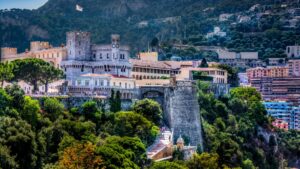 Deu came up with an amazing plan of defense, and one that would probably never have crossed the mind of the men, kings, lords, or army generals alike. Even though the city was almost out of food, the plan was to take the city’s remaining flour, bake it into two loaves of bread. Then Deu-la-Deu took them up to the castle walls, and threw them at the Spanish army, saying, “If you need any more, let us know.” The Spanish believed the city was well stocked and so the simply gave up and left. The siege was over, just like that. It is the funniest end to a siege I can imagine. Since that amazing incident, Deu-la-Deu Martins was considered a heroine in Portugal and a statue was erected in her honor.
Deu came up with an amazing plan of defense, and one that would probably never have crossed the mind of the men, kings, lords, or army generals alike. Even though the city was almost out of food, the plan was to take the city’s remaining flour, bake it into two loaves of bread. Then Deu-la-Deu took them up to the castle walls, and threw them at the Spanish army, saying, “If you need any more, let us know.” The Spanish believed the city was well stocked and so the simply gave up and left. The siege was over, just like that. It is the funniest end to a siege I can imagine. Since that amazing incident, Deu-la-Deu Martins was considered a heroine in Portugal and a statue was erected in her honor.
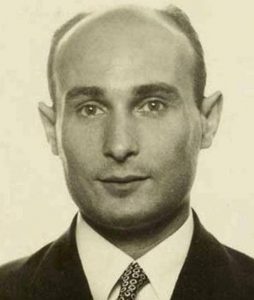 When someone sees something so horrific that the only think left to do is to act, drastic measures must be taken. Juan Pujol Garcia (aka Garbo), is one of the most successful intelligence agents in the annals of warfare. That is an amazing statement, but it is true. Garcia was a Spanish hotel manager who fiercely hated fascism and Germany. Garcia could see the horrific things that the Germans were doing, and he could not tolerate it. Garcia knew what he had to do, so he offered his services at the British embassy. Strangely, the British embassy staff laughed him out of the building, convincing the Spaniard the only way to impress the British was to infiltrate the German intelligence service, Abwehr.
When someone sees something so horrific that the only think left to do is to act, drastic measures must be taken. Juan Pujol Garcia (aka Garbo), is one of the most successful intelligence agents in the annals of warfare. That is an amazing statement, but it is true. Garcia was a Spanish hotel manager who fiercely hated fascism and Germany. Garcia could see the horrific things that the Germans were doing, and he could not tolerate it. Garcia knew what he had to do, so he offered his services at the British embassy. Strangely, the British embassy staff laughed him out of the building, convincing the Spaniard the only way to impress the British was to infiltrate the German intelligence service, Abwehr.
Without the help of the British government, Garcia decided that he had to take matters into his own hands. He headed to Lisbon, involved himself in the intrigue of the Portuguese capital, and was soon sending Abwehr a stream of bogus intelligence supposedly gleaned while traveling through Britain. In truth, he never left Lisbon, and was concocting information from films, newspapers, and even phone books. It was a drastic plan, but the stream of information earned him the trust of the Germans, and the British government finally gave Garcia 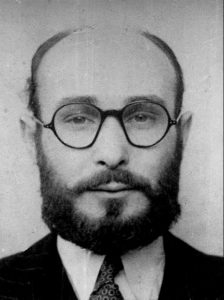 some missions. With this success to his credit, he talked his way into an interview in Britain with MI5. He was given the code name Garbo, after actress Greta Garbo, for his ability to spin convincing narratives out of thin air, and was put to work sending credible disinformation to the Germans.
some missions. With this success to his credit, he talked his way into an interview in Britain with MI5. He was given the code name Garbo, after actress Greta Garbo, for his ability to spin convincing narratives out of thin air, and was put to work sending credible disinformation to the Germans.
Now under cover, Garbo’s crowning achievement was his involvement in the operation to deceive the Nazis about the location of the Normandy invasion. He not only mislead the German high command about the location, but convinced them the D-Day landing was a diversion for an attack elsewhere. Garcia was such an important asset to the Nazis…or so they thought. The Germans even awarded him the Iron Cross, Second Class in July 1944. He also received the MBE from the British in November 1944. He had been a very successful double agent. After the war, Garbo deliberately faded into obscurity, fearing Nazi reprisals, and relocated to Venezuela, where he died in 1988.
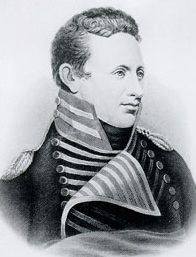 The Louisiana Purchase was the acquisition of the Louisiana territory, which was 828,000 square miles, by the United States from France in 1803. The purchase treaty was signed on April 30, 1803. There were a number of explorers who were anxious to explore the new territory…among them, Lieutenant Zebulon Pike. Pike’s explorations of the newly acquired Louisiana Territory of the United States began before the nation’s first western explorers, Lewis and Clark, had returned from their own expedition up the Missouri River. Pike was more of a professional military man than either Lewis or Clark, and he was a smart man who had taught himself Spanish, French, mathematics, and elementary science. When the governor of Louisiana Territory requested a military expedition to explore the headwaters of the Mississippi, General James Wilkinson picked Pike to lead it.
The Louisiana Purchase was the acquisition of the Louisiana territory, which was 828,000 square miles, by the United States from France in 1803. The purchase treaty was signed on April 30, 1803. There were a number of explorers who were anxious to explore the new territory…among them, Lieutenant Zebulon Pike. Pike’s explorations of the newly acquired Louisiana Territory of the United States began before the nation’s first western explorers, Lewis and Clark, had returned from their own expedition up the Missouri River. Pike was more of a professional military man than either Lewis or Clark, and he was a smart man who had taught himself Spanish, French, mathematics, and elementary science. When the governor of Louisiana Territory requested a military expedition to explore the headwaters of the Mississippi, General James Wilkinson picked Pike to lead it.
Although Pike’s first western expedition had little success, Wilkinson again picked him 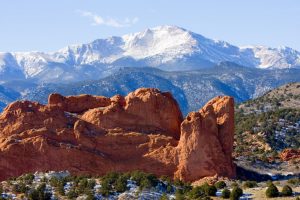 to lead a second mission in July 1806 to explore the headwaters of the Red and Arkansas Rivers. This route took Pike across present-day Kansas and into the high plains region that would later become the state of Colorado. As Pike approached the Colorado foothills of the Rocky Mountains during his second exploratory expedition, Lieutenant Zebulon Pike spots a distant mountain peak that looks “like a small blue cloud.” The mountain was later named Pike’s Peak in his honor, but Pike had vastly underestimated the mountain, and the distance to it. He told his men they should be able to walk to the peak, climb it, and return before dinner. Pike and his men struggled through snow and sub-zero temperatures before finally taking shelter in a cave for the night, without even having reached the base of the towering mountain. Pike later pronounced the peak impossible to scale. Little did he know what the future would bring for Pike’s Peak, especially tourism.
to lead a second mission in July 1806 to explore the headwaters of the Red and Arkansas Rivers. This route took Pike across present-day Kansas and into the high plains region that would later become the state of Colorado. As Pike approached the Colorado foothills of the Rocky Mountains during his second exploratory expedition, Lieutenant Zebulon Pike spots a distant mountain peak that looks “like a small blue cloud.” The mountain was later named Pike’s Peak in his honor, but Pike had vastly underestimated the mountain, and the distance to it. He told his men they should be able to walk to the peak, climb it, and return before dinner. Pike and his men struggled through snow and sub-zero temperatures before finally taking shelter in a cave for the night, without even having reached the base of the towering mountain. Pike later pronounced the peak impossible to scale. Little did he know what the future would bring for Pike’s Peak, especially tourism.
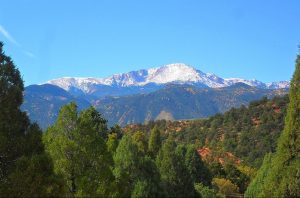 The remainder of Pike’s expedition was as bad as the first part. After attempting for several months to locate the Red River, Pike and his men became hopelessly lost. Were it not for a troop of Spanish soldiers who arrested Pike and his men, they would have most likely died. The soldiers escorted them to Santa Fe, thus providing Pike with an tour of that important region, courtesy of the Spanish military. After returning to the United States, Pike wrote an account of his expedition that won him some fame, but little money. In recognition of his bravery and leadership during the western expeditions, the army appointed him a brigadier general during the War of 1812. He was killed in an explosion during the April 1813 assault on Toronto.
The remainder of Pike’s expedition was as bad as the first part. After attempting for several months to locate the Red River, Pike and his men became hopelessly lost. Were it not for a troop of Spanish soldiers who arrested Pike and his men, they would have most likely died. The soldiers escorted them to Santa Fe, thus providing Pike with an tour of that important region, courtesy of the Spanish military. After returning to the United States, Pike wrote an account of his expedition that won him some fame, but little money. In recognition of his bravery and leadership during the western expeditions, the army appointed him a brigadier general during the War of 1812. He was killed in an explosion during the April 1813 assault on Toronto.
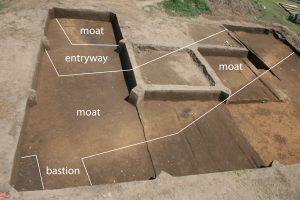 As the door closes on past eras of history, some things only exist in the memories of the people who lived it, and some things only exist in books or other writings. That doesn’t mean that they totally cease to exist, however. There are parts of the past that are still there…hidden, sometimes just under the surface, and sometimes a little way beneath the surface. Sometimes, there are clues on the surface, and other times, all you might have is a general location. Such is the case with Fort San Juan in western North Carolina. In 1566, Spanish explorer Juan Pardo began the first of two expeditions along the southeast coast of North America, establishing a series of forts in modern day South Carolina. The following year, Pardo travelled west, journeying almost 300 miles into what is now North Carolina. There, Pardo and his men constructed Fort San Juan and a small cluster of houses. Pardo named the settlement Cuenco, after his Spanish hometown.
As the door closes on past eras of history, some things only exist in the memories of the people who lived it, and some things only exist in books or other writings. That doesn’t mean that they totally cease to exist, however. There are parts of the past that are still there…hidden, sometimes just under the surface, and sometimes a little way beneath the surface. Sometimes, there are clues on the surface, and other times, all you might have is a general location. Such is the case with Fort San Juan in western North Carolina. In 1566, Spanish explorer Juan Pardo began the first of two expeditions along the southeast coast of North America, establishing a series of forts in modern day South Carolina. The following year, Pardo travelled west, journeying almost 300 miles into what is now North Carolina. There, Pardo and his men constructed Fort San Juan and a small cluster of houses. Pardo named the settlement Cuenco, after his Spanish hometown.
In 2013, a team of archeologists announced the discovery of the remains of a long lost 16th century Spanish garrison in western North Carolina that predates the earliest English settlements in North America by decades. Established in 1567, Fort San Juan was just one of at least six military installations built by the Spanish across the Appalachian mountain range, stretching from the coast of South Carolina to eastern Tennessee, and the only one of the forts scientists have located so far. Because Fort San Juan was established in 1567, time had taken its toll, and the information about it’s location was scarce, as was any visible trace of its location. Fort San Juan was one of at least six military installations that were built by the Spanish across the Appalachian mountain range, stretching from the coast of South Carolina to eastern Tennessee…and the only one of the 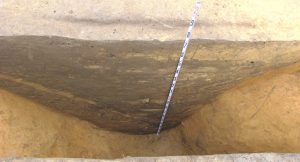 forts scientists have been able to locate so far. In the summer of 2013, a team of archeologists announced the discovery of the fort’s remains.
forts scientists have been able to locate so far. In the summer of 2013, a team of archeologists announced the discovery of the fort’s remains.
Archaeological work has been underway for years, revealing artifacts that suggested a Spanish settlement might have been there. During the summer of 2013, archaeologists affiliated with the University of Michigan, Tulane University and Warren Wilson College excitedly announced that they had discovered evidence of a defensive moat and other remains, definitive evidence of Fort San Juan. Nearly a decade ago, archeologists had found evidence of the soldier’s housing at Cuenco, but had been had not been able to locate the fort itself. The summer of 2013 changed all that, and was in fact it was completely by accident. The team, comprised of members from the University of Michigan, New Orleans’s Tulane University and Warren Wilson College in Asheville, North Carolina, was actually researching the Mississippian built mud mounds at the Joara site when they stumbled upon evidence of the remains of the fort. An initial dig turned up soil disturbances at the site that didn’t fit with what they expected. The team brought in a magnetometer to x-ray the subsurface. This 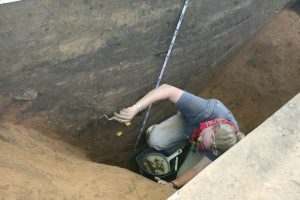 allowed them to identify the outlines of the moat was believed to have surrounded the garrison. Additional large scale excavations revealed its shape and size. A V-shaped area 5.5 feet deep, 12 to 15 feet across and up to 100 feet in length. In addition to the moat, the team recovered personal items belonging to the Spanish soldiers who lived and died at the fort, including pottery shards, nails, tacks, and iron hooks used for fastening clothing and swords. They also believe they located the gravel entry path into the garrison and the possible location of the strong house in a corner of the fort, where Spanish soldiers would have stored tools and weaponry. The group plans further excavations of the site next year.
allowed them to identify the outlines of the moat was believed to have surrounded the garrison. Additional large scale excavations revealed its shape and size. A V-shaped area 5.5 feet deep, 12 to 15 feet across and up to 100 feet in length. In addition to the moat, the team recovered personal items belonging to the Spanish soldiers who lived and died at the fort, including pottery shards, nails, tacks, and iron hooks used for fastening clothing and swords. They also believe they located the gravel entry path into the garrison and the possible location of the strong house in a corner of the fort, where Spanish soldiers would have stored tools and weaponry. The group plans further excavations of the site next year.
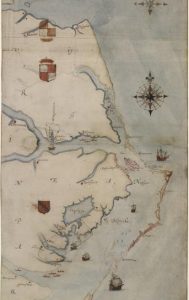 When I think of a lost people, I think of a tribe in Africa or somewhere very isolated, but I never think of someplace in America! Nevertheless, it happened right here in America. Of course, it was a long…long time ago. It was long before people could easily track someone down. The year was 1587, the day was July 22. That was the day when the new colony arrived in Roanoke, North Carolina, which was colonial Virginia. On August 18, 1587, the first English baby to be born in the Americas, Virginia Dare was born. The group had been dispatched by Sir Walter Raleigh, and was led by John White, who by the way, was Virginia Dare’s grandfather. Upon their arrival, they found nothing of the English garrison that had gone ahead, except one skeleton. The people really didn’t want to stay there after that, but the fleet commander, Simon Fernandez would not let them return to the ship, and the ships sailed with the promise of new supplies to come.
When I think of a lost people, I think of a tribe in Africa or somewhere very isolated, but I never think of someplace in America! Nevertheless, it happened right here in America. Of course, it was a long…long time ago. It was long before people could easily track someone down. The year was 1587, the day was July 22. That was the day when the new colony arrived in Roanoke, North Carolina, which was colonial Virginia. On August 18, 1587, the first English baby to be born in the Americas, Virginia Dare was born. The group had been dispatched by Sir Walter Raleigh, and was led by John White, who by the way, was Virginia Dare’s grandfather. Upon their arrival, they found nothing of the English garrison that had gone ahead, except one skeleton. The people really didn’t want to stay there after that, but the fleet commander, Simon Fernandez would not let them return to the ship, and the ships sailed with the promise of new supplies to come.
John White was not allowed to stay, and so returned to England on August 27, 1587…vowing to return in three months time. That was about the time of the Spanish Armada attack in 1588, which delayed White’s return to Roanoke. White tried desperately to return to the little colony for the next three years. When he was finally able to get there, he came rushing onshore, only to find that the colony was gone. 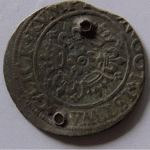
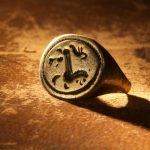 Among those missing was the little girl, Virginia Dare, White’s granddaughter. They had arrived on what would have been her third birthday…August 15. Whites return was delayed because of the Anglo-Spanish war, and the Spanish ships that robbed the expedition of the supplies they were taking over to the colonists. It is suspected that the colony disappeared during that war, but there is no clear clarification as to where they went or who took them.
Among those missing was the little girl, Virginia Dare, White’s granddaughter. They had arrived on what would have been her third birthday…August 15. Whites return was delayed because of the Anglo-Spanish war, and the Spanish ships that robbed the expedition of the supplies they were taking over to the colonists. It is suspected that the colony disappeared during that war, but there is no clear clarification as to where they went or who took them.
There has been much speculation as to the fate of the Roanoke Lost Colony, but the sure fate of the settlers left behind is unknown and the colony is known as the “Lost Colony” of Roanoke to this day. Over the years numerous attempts have been made to find the Lost Colony, including the Lost Colony DNA Project started in 2005. Recent investigations speculate that the Lost Colony relocated to where the Chowan River meets the Albemarle Sound in present day Bertie County, North Carolina. Nevertheless, recent discoveries found  European objects in the Hatteras Island area, including a sword hilt, broken English bowls, and a fragment of a slate writing tablet still inscribed with a letter. These could point to the presence of the colonists on Hatteras Island, some 50 miles southeast of their settlement on Roanoke Island. There were also some found at a site on the mainland 50 miles to the northwest. Some people have thought that the Native Americans took the people or at least assimilated them into their tribe, because there are in some of that modern day tribe of people with strangely gray eyes. I suppose we will never really know the reality of what happened, but I would rather think that the Native Americans took them in, than to think that they were killed.
European objects in the Hatteras Island area, including a sword hilt, broken English bowls, and a fragment of a slate writing tablet still inscribed with a letter. These could point to the presence of the colonists on Hatteras Island, some 50 miles southeast of their settlement on Roanoke Island. There were also some found at a site on the mainland 50 miles to the northwest. Some people have thought that the Native Americans took the people or at least assimilated them into their tribe, because there are in some of that modern day tribe of people with strangely gray eyes. I suppose we will never really know the reality of what happened, but I would rather think that the Native Americans took them in, than to think that they were killed.

